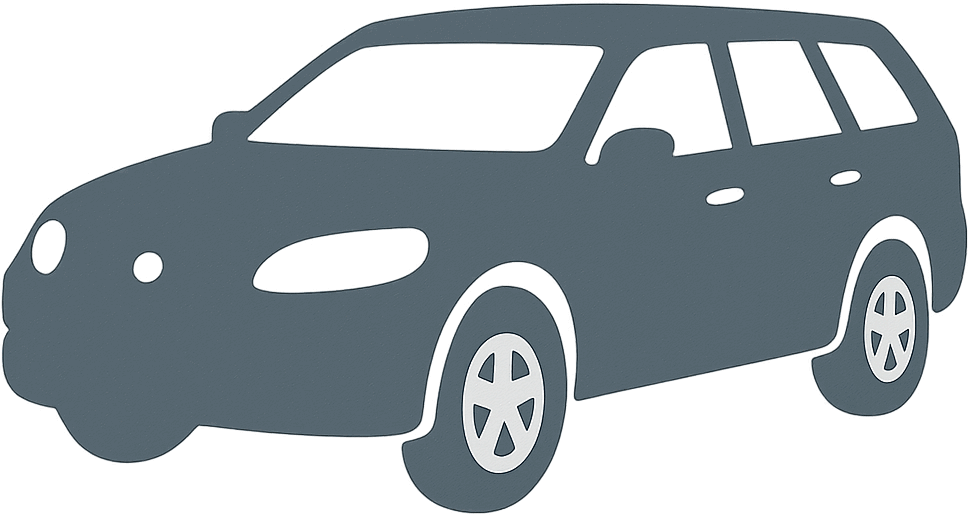 1967 Moskvich 427 Combi Dimensions, Size & Specs
1967 Moskvich 427 Combi Dimensions, Size & Specs
Measurements of the 1967 Moskvich 427 Combi, engineered for optimal performance and comfort
| Dimensions | |
|---|---|
| Length: | 4040 mm159.1 in13.3 ft |
| Width: | 1550 mm61.0 in5.1 ft |
| Height: | 1485 mm58.5 in4.9 ft |
| Weight Specifications | |
| Curb Weight: | 1065 kg2348 lbs |
| Tire Specifications | |
| Tire Size: |
|
The Moskvich 427 Combi is a classic station wagon produced during a brief period from 1975 to 1976, representing a versatile and practical vehicle from the Soviet automaker Moskvich. Initially introduced as a generation starting in 1967, the 427 Combi built upon the compact design ethos to deliver a reliable and functional family car with a characteristic vintage appeal. Measuring 4040 mm (158.9 inches) in length, 1550 mm (61.0 inches) in width, and 1485 mm (58.5 inches) in height, the 427 Combi fits comfortably into the compact station wagon segment. It offers ample cabin space and cargo capacity while maintaining maneuverability reminiscent of smaller cars of its era. Weighing in at a curb weight of 1065 kilograms (2348 pounds), the vehicle balances sturdiness with agility, suitable for urban and suburban driving. Tire specifications of 165/80 R13 further emphasize its design for moderate road use, combining decent grip with comfort. The Moskvich 427 Combi is recognized not just for its size but for its blend of utility and vintage Soviet automotive engineering, making it an interesting choice for collectors and enthusiasts interested in mid-20th-century Eastern European vehicles. Its compact dimensions and light weight contribute to a practical driving experience, while the station wagon body style maximizes usability for families or those requiring extra cargo space.
Discover the standout features that make the 1967 Moskvich 427 Combi a leader in its class
Have a question? Please check our knowledgebase first.
The Moskvich 427 Combi from the 1975-1976 production period has a length of 4040 mm (159.1 inches), a width of 1550 mm (61.0 inches), and a height of 1485 mm (58.5 inches). These dimensions make the 427 Combi a compact station wagon that was designed to offer practical space in a relatively small footprint. Its moderate length and width allowed it to navigate narrower roads common in Soviet cities during that era, while maintaining a reasonable interior volume for passengers and cargo.
The Moskvich 427 Combi weighs in at 1065 kg (2347 lbs) curb weight, which is relatively light compared to many Western station wagons of the mid-1970s. This lighter weight results from its compact size and simpler construction typical of Soviet-era vehicles, which prioritized functionality and durability. The modest weight helped improve fuel efficiency and made the car easier to maneuver and maintain, qualities appreciated in the economic environment of the time.
Yes, the Moskvich 427 Combi will fit comfortably into a standard single-car garage. Most standard garages are designed to accommodate vehicles up to approximately 6 meters (about 20 feet) in length and about 3 meters (around 10 feet) in width. With a length of 4040 mm (159.1 inches or roughly 13.2 feet), a width of 1550 mm (61 inches), and a height of 1485 mm (58.5 inches), the Moskvich 427 Combi is well within these limits, making it easy to park and store in typical home garages.
The Moskvich 427 Combi comes equipped with 165/80 R13 tires. This means the tires are 165 mm wide, with an aspect ratio of 80 (the sidewall height is 80% of the tire width), and they fit 13-inch diameter wheels. These tires were standard for compact vehicles of that era and contribute to a balance of ride comfort and handling suitable for typical road conditions. The relatively narrow tread and smaller diameter wheels promote fuel efficiency and make replacements more affordable.
The Moskvich 427 Combi has a height of 1485 mm (58.5 inches), which makes it relatively low compared to many modern station wagons, which often range between 1400 mm and 1600 mm in height but benefit from more spacious interior designs and advanced safety features. The lower profile of the 427 Combi reflects the design priorities of its time, with a focus on aerodynamics and a compact, efficient shape to meet Soviet needs rather than the modern emphasis on interior passenger comfort and cargo volume.
The Moskvich 427 Combi is a compact station wagon designed primarily to carry up to five passengers, including the driver. Although specific interior cabin dimensions are not widely documented, its length and height suggest a relatively modest interior space by modern standards. The 'Combi' body style emphasizes extended cargo capacity over passenger legroom when compared to standard sedans. This wagon was intended to provide practical cargo-carrying ability for families or utility without sacrificing too much passenger comfort for its era.
Compared to its predecessor models like the Moskvich 424 (produced in the 1960s), the 427 Combi features a similar compact footprint but focuses more on the station wagon design rather than a sedan. The 427 Combi maintained the length around 4040 mm but optimized cargo space and rear seating arrangement, distinguishing itself from previous sedan-oriented models. While the overall size did not increase significantly, the body style evolution allowed it to serve different needs, especially appealing to drivers requiring more utility and versatility.
When compared to similar Western European station wagons of the 1970s, like the Volkswagen Variant or the Opel Kadett Caravan, the Moskvich 427 Combi is notably more compact. For instance, the 1975 Volkswagen Variant measured approximately 4300 mm (169 inches) in length, whereas the Moskvich 427 Combi is 4040 mm (159.1 inches) long. The 427 Combi’s narrower width of 1550 mm (61.0 inches) versus approximately 1625-1650 mm for its Western counterparts demonstrates its smaller footprint. This size difference reflects both the differing design philosophies and market demands between the Soviet Union and Western Europe.
The Moskvich 427 Combi was designed as a practical, affordable station wagon primarily for everyday use in the Soviet Union and Eastern Bloc. Its compact size, simplicity, and durability made it ideal for families, small businesses, and utility tasks. Featuring a rear hatch and an extended cargo area compared to typical sedans, the 427 Combi was versatile for transporting goods and equipment. Its moderate engine power and lightweight design suited the typically limited and rugged roads of the region, emphasizing reliability over performance or luxury.
The Moskvich 427 Combi is distinguished by its station wagon design intended for utility and cargo space, contrasting with more sedan-oriented models like the Moskvich 412. While many Moskvich wagons shared mechanical components, the 427 Combi’s body design focused on maximizing rear cargo capacity with a distinctive rear hatch, making it more versatile. Performance-wise, the 427 maintained similar engine and drivetrain configurations as its siblings, focusing on economy and reliability rather than speed or high torque, catering to practical needs rather than sporty or luxury aspirations.
